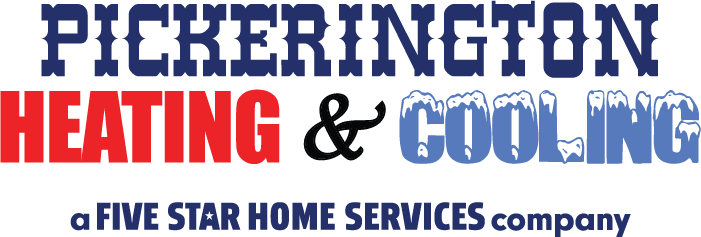For many Ohio residents, the arrival of warmer days marks the beginning of the allergy season. Nestled in the heart of the Midwest, Ohio’s diverse climate and landscape contribute to a mix of airborne irritants, triggering hay fever and other allergy-related issues. If you’re struggling with these allergens, you’re not alone—many Ohioans face seasonally-induced allergies. Today, let Pickerington Heating & Cooling provide you with expert tips and tricks to fortify your home and personal space against pollen, dust, and other triggers. With our comprehensive approach, we aim to ensure your comfort and well-being during allergy season.
What Exactly Is Hay Fever?
Hay fever, or allergic rhinitis, presents symptoms akin to the common cold, but unlike a virus-triggered cold, these symptoms arise from an allergic response to indoor or outdoor allergens. These symptoms include:
1. Runny and/or stuffy nose
2. Watery eyes
3. Itchy nose, mouth, or/and throat
4. Sneezing
5. Coughing and/or puffy and swollen eyelids
What Should You Know About the Ohio Landscape & Allergens?
Understanding the culprits is the first step to fortifying your defense against them. Ohio’s allergy season predominantly impacts in the spring and fall, driven by the mass pollination of ragweed, trees, and grasses, resulting in heavy airborne pollen. Ohio’s unique geography, with its lakes, rivers, and extensive farmlands, creates environmental factors that can exacerbate allergies. From mold spores in the damp Ohio River Valley to the dust and grime dispersed by wind in the flat farming country, these elements can aggravate allergic reactions.
Home Solutions:
Remember, while it’s easy to blame the fields and forests for your watery eyes and itchy throat, indoor allergens can be just as potent. Homes often harbor pet dander, dust mites, and mold, contributing to spring and year-round allergies. Your bedroom, living room, and kitchen can all be hotspots, potentially collecting these irritants.
Did you know that Hay Fever affects 1 in 5 people at least once in their lifetime?
Here are some simple yet effective household tips to cut down on indoor allergen triggers:
- Dusting – Create and maintain a weekly dusting schedule using a damp cloth or a microfiber duster that doesn’t just push dust around. Ensure you tackle hard-to-reach places like ceiling fan blades and shelves to keep your home allergen-free.
- Vacuuming – Utilize a vacuum cleaner with a HEPA filter to trap tiny particles effectively. High-traffic areas should be vacuumed at least twice a week, including upholstered furniture, to maintain a clean environment.
- Curtains and Drapes – These can harbor dust and dander. Make sure to wash or vacuum curtains and drapes every few months. Letting in sunlight can help clear out dampness and reduce allergen buildup.
- Washing – Regular washing of all bedding, blankets, and bed sheets is essential for maintaining a healthy indoor environment.
- Air Filters – Maintaining a clean and efficient HVAC system is crucial for managing indoor air quality (IAQ). High-efficiency air filters are your first line of defense. Change them as recommended, typically every 30 to 90 days, especially during periods of heavy use.
- Showering – If your allergies are severe, consider showering immediately after spending extended periods outside. Washing off any pollen or particles promptly can reduce the chances of bringing allergens into your home and triggering reactions.
Professional Solutions:
Embracing modern technology is your key to achieving a nearly allergen-free home. Through professional services and advanced smart devices, we offer both convenience and top-tier air purification. Here are a couple of solutions worth considering:
- Duct Cleaning – Duct cleaning is an excellent option for reducing allergens by eliminating dust and other contaminants within your home. It also helps in particularly humid environments by preventing mold spores from circulating and compromising your indoor air quality (IAQ). Regular duct cleaning every 3-5 years can effectively manage these unwanted airborne contaminants.
- The iWave – The iWave air purifier is an advanced whole-home purification system integrated with your HVAC system. Utilizing a state-of-the-art needle-point bi-polar ionization generator, it captures and eliminates allergens, pathogens, and pollutants from your home’s air, reducing odors and dust buildup while enhancing overall air quality. Moreover, it prolongs the life of your HVAC system, offering a low-maintenance and silent solution for pure air in every room.
- Whole-Home Dehumidifier – Mold thrives in damp, warm environments, making Ohio’s summers and river valleys a perfect breeding ground. A whole-home dehumidifier reduces moisture, improves air quality, and decreases musty odors by maintaining low humidity levels. Investing in a dehumidifier that covers your home’s most inhabited areas is crucial for maintaining optimal IAQ.
- Smart Thermostat – A smart thermostat can significantly enhance your home’s IAQ by monitoring humidity levels and notifying you when action is needed. It also alerts you when your HVAC air filter requires changing, providing a convenient reminder in the hustle and bustle of everyday life.
If you’re interested in adding any of these beneficial components to your home or scheduling a ductwork cleaning service, please give us a call. We are committed to helping you breathe easier within your own home.

Take control of your indoor air quality with these practical tips. Our goal is to empower you with knowledge and solutions, making a breathable, allergen-free home attainable. Understanding, identifying, and effectively combating these microscopic intruders is the first step toward a healthier living environment.
Call Pickerington Heating & Cooling today at (614) 837-4026 or schedule an appointment online now by clicking here!






